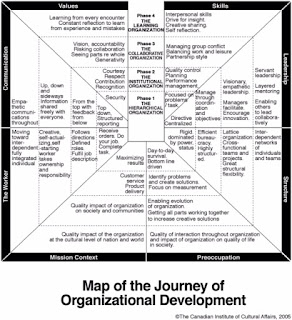The work of Learning and Development should focus on what is (now) difficult and valuable for businesses in the digital era

" Siloed departments, fixed roles and tasks, hierarchical structures, top down controlled strategies, action plans and funding mechanisms. Our dominant ways of working aimed at optimisation and efficiency won't promote the adaptation and exploration required to work in complex situations." John Hagel Despite the layers of learning technologies I'd argue 'L&D' is still predominantly supporting the old industrial gods of optimisation and efficiency. Find a management problem. Develop a 'solution' to directly solve it. Measure (something / anything). Tell Management. (Realise Management have moved on to the next fire to fight and aren't that interested anymore). Let's consider what used to be a differentiators in a successful business: An efficient System; (fixed processes and procedures) that could be scaled, repeated and refined; A 'growth strategy' formed from the particular experiences and values of a small leadership...
